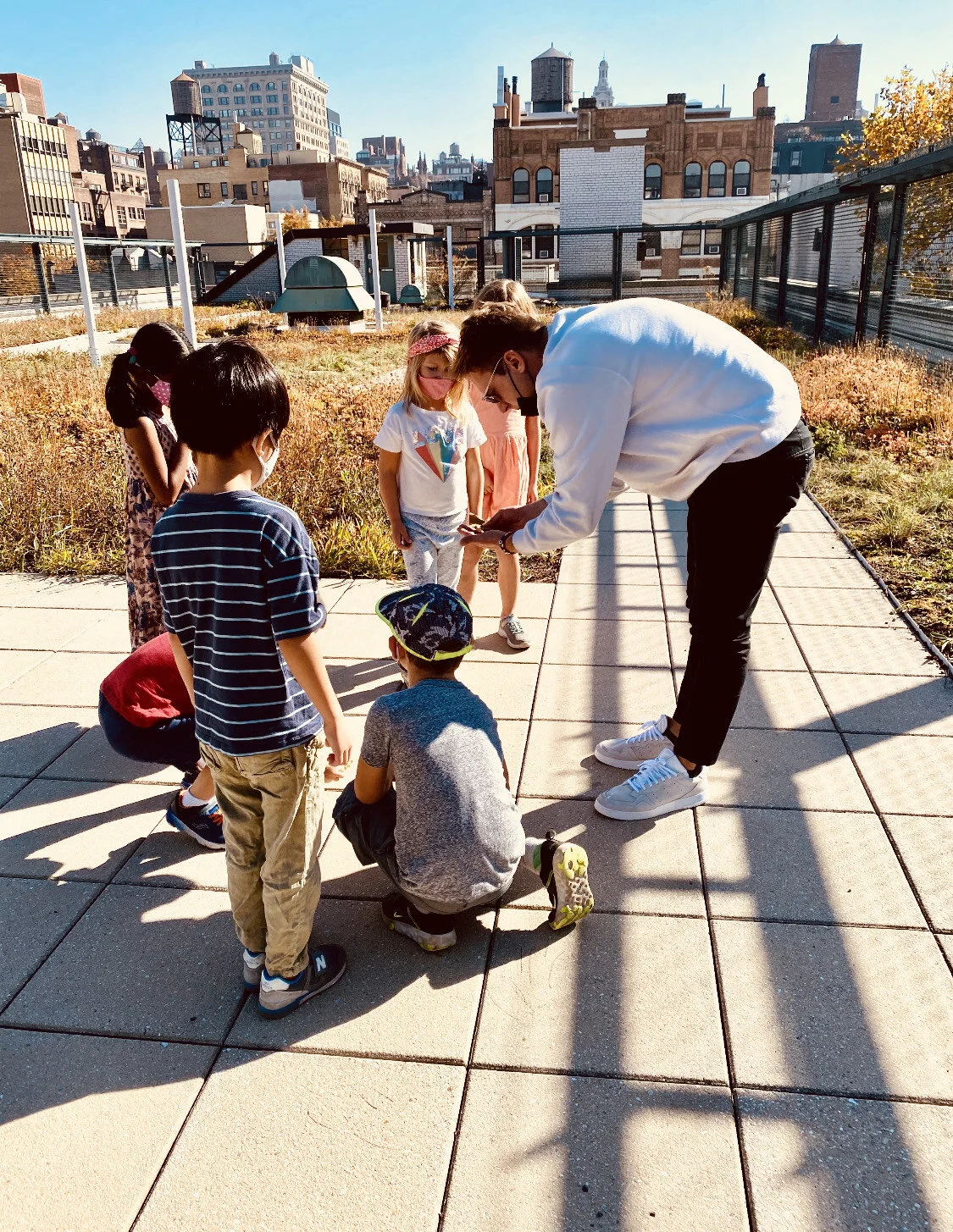Let’s Put Green Roofs on Schools and Help Students and Teachers
Advertisement
Did you ever have a school assignment that involved growing a seedling, nurturing its progress and watching it bloom? Did you ever do that on the roof of your school building? Currently, there is a bill in Congress that could make this a reality for our country’s learners. Not only that, it would help mitigate climate change, reduce the urban heat island, create jobs, and grow our economy for generations to come.
The Public School Green Rooftop Program (HR 1863), sponsored by U.S. Rep. Nydia M. Velázquez, D-NY, would establish a $500 million grant program for installing and maintaining green roof systems on public elementary and secondary school buildings. Though still underused, green roofs are catching on across the nation as their benefits — and societal necessity — become more and more clear.
The P.S. 41 green roof in New York City. Photo: Vicki Sando
A green roof is a layer of vegetation planted in engineered growing media over a drainage layer, filter cloth, and root-repellent and waterproofing system on a roof. Green roofs not only improve a building’s aesthetics and energy performance, they provide a multitude of economic and community benefits. Green roofs are job creators. HR 1863 would create 29,000 total direct, indirect, and induced job-years over a 50-year period. About 5,570 of those direct jobs would be in construction and maintenance, and more than 23,000 indirect and induced job-years would be created as a result. These are good American jobs growing plants, blending growing medium, manufacturing irrigation and drainage systems, not to mention the design, construction, and ongoing maintenance employment.
Beyond their economic value, green roofs offer educational value, creating new opportunities for students in STEM, as well as access to physical activity outdoors. The data behind the educational, emotional, and physiological benefits for young people is clear. Children who grow a vegetable themselves are more likely to eat it, and time outdoors boosts physical and mental health. Some of the children that would be served by this legislation have no idea where there food comes from, and little access to safe green space in their communities.
An anonymous survey of 160 first- through fifth-grade students that had access to a green roof on their inner city school in New York City was completed in June 2021. The results indicate the emotional, social and educational benefits that kids and communities experience from green roofs. When asked how they feel on the green roof, students and teachers alike used words like “happy,” “calm,” “peaceful” and “relaxed,” and noted the profound value of access to green space.
Advertisement
The green roof on Ohlone School in Palo Alto, CA. Photo: Columbia Green Technologies
At Columbia Green Technologies we have implemented dozens of green roofs on schools, many of which are focused on stormwater, while others are accessible to children and teachers. We have received an abundance of positive feedback from students and teachers that green roofs create an effective learning environment that contributes to the wellness of the child. The results are showing when kids have access to nature, they stay more focused and have reduced levels of stress. All things we love from nature.
Green Roofs on schools also provide the opportunity for teachers to introduce environmental and agriculture concerns around climate change and provide a visible, tangible solution. Many students in urban school atmospheres have not had the opportunity to have access to an interactive natural learning environment that a green roof can provide. Green roofs are the modern designs for future schools.
School buildings benefit as well. A green roof can increase the life span of a roof (from 17 years to 40-plus years) while reducing energy costs and increasing the life span of heating, ventilation, and air conditioning systems. They also lead to reduced long-term building operational costs, which reduces the cost to the taxpayers.
Green roofs help to improve communities. They improve air quality, storm water management and water quality, and reduce heat “islands.” They improve property value and stabilize neighborhoods while reducing greenhouse gas emissions and carbon sequestration.
They provide habitat for birds, bees, and other pollinators. Schools can even harvest produce grown on green roofs and use it in cafeterias or send fresh food home with students — uniting families in the community through nourishing fruits and vegetables.
The green roofs built as part of HR 1863 would lead to a net benefit of $183 million (2021 dollars) over a 50-year period, at a rate of return of 7.3%. Source: Lilauwala et al., 2021
On top of all that (no pun intended), these roofs are considered effective in the reduction of atmospheric CO2 because of their ability to reduce energy consumption by buildings and sequestering carbon in plants and substrates. This is no small benefit — the heat dome that hit the Pacific Northwest in late June made it clear that we need as much help as possible. Green roofs would be a tool in that effort.
Please help us advocate to have HR 1863, so we can improve every community across the country. Go to www.greenroofs/advocacy and send a letter to your congressional representative. This kind of legislation should be a no-brainer. Let’s make it happen!
Vanessa Keitges is President of Columbia Green Technologies, a green roof manufacturer headquartered in Portland, OR. Columbia Green has worked with cities and schools across the country to implement green roofs as a solution to aging infrastructure and help mitigate the effects of climate change.







